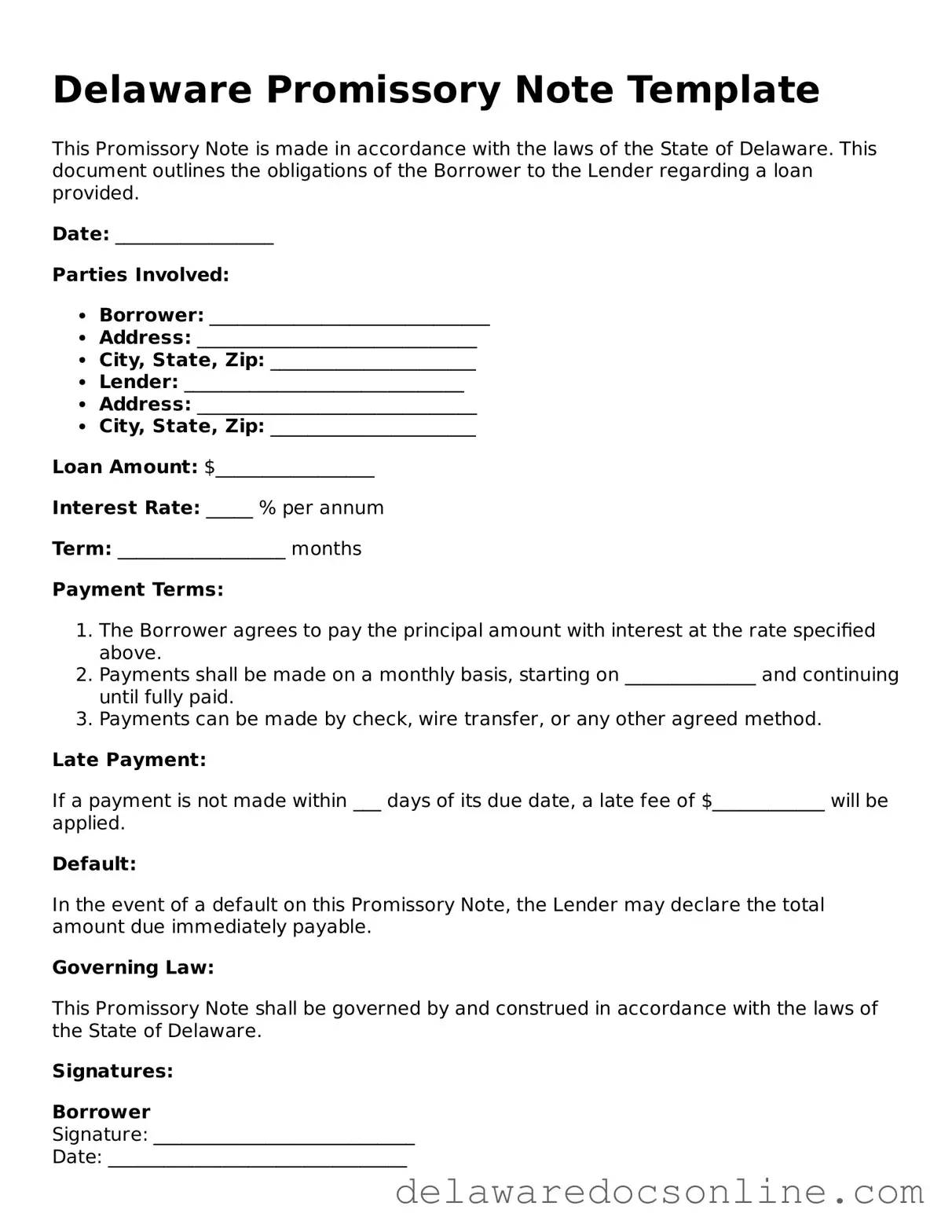Delaware Promissory Note Template
This Promissory Note is made in accordance with the laws of the State of Delaware. This document outlines the obligations of the Borrower to the Lender regarding a loan provided.
Date: _________________
Parties Involved:
- Borrower: ______________________________
- Address: ______________________________
- City, State, Zip: ______________________
- Lender: ______________________________
- Address: ______________________________
- City, State, Zip: ______________________
Loan Amount: $_________________
Interest Rate: _____ % per annum
Term: __________________ months
Payment Terms:
- The Borrower agrees to pay the principal amount with interest at the rate specified above.
- Payments shall be made on a monthly basis, starting on ______________ and continuing until fully paid.
- Payments can be made by check, wire transfer, or any other agreed method.
Late Payment:
If a payment is not made within ___ days of its due date, a late fee of $____________ will be applied.
Default:
In the event of a default on this Promissory Note, the Lender may declare the total amount due immediately payable.
Governing Law:
This Promissory Note shall be governed by and construed in accordance with the laws of the State of Delaware.
Signatures:
Borrower
Signature: ____________________________
Date: ________________________________
Lender
Signature: ____________________________
Date: ________________________________
This document is binding upon the parties hereto and their respective heirs, representatives, successors, and assigns.
